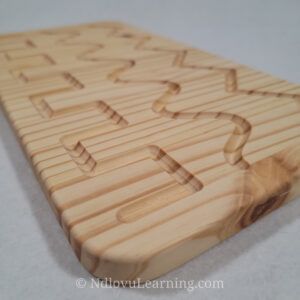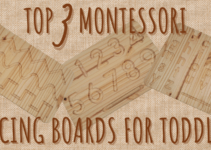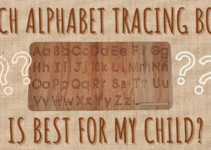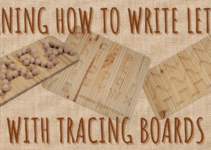Developing fine motor skills is critical to a young child’s development! Technically speaking, when referring to fine motor skills, we are talking about a child’s ability to use all the small muscles in their hands and fingers to manipulate and control different objects. For example, holding a pencil or threading a needle.
Our goal with this post is, primarily, to point you to four tools specifically designed to help develop fine motor skills in young learners. Each one of these tools will help a child develop their fine motor skills in a slightly different way and can be manipulated or customized to create a new experience each and every time they are used.
Pre-Writing Tracing Boards
The first tools we want to talk about are our Pre-Writing Tracing Boards. We have a few different versions of these but they all help students develop their fine motor skills in many ways. Some of the most popular pre-writing tracing boards that we offer are squiggle boards, shape tracers, and alphabet boards (used as a shape-tracer at first and eventually a literacy tool).
The first and most obvious use of these boards is for a young learner simply to trace the shapes with their fingers. This helps them develop their hand-eye coordination as they practice moving their finger through the shape, squiggle, or letter. For a slightly more advanced learner, they can begin to recite the shape or letter they are tracing as well.

Once students are able to successfully trace their shapes with their fingers, they can move onto the second stage and trace them with a wooden stylus! The stylus we include with our tracing boards is thicker than a normal pencil so it is easier for young learners to hang onto so they learn how to properly hold a pencil. Holding a stylus and tracing the shapes or squiggles is a new challenge but is the next building block to actual writing!
In addition to those two main uses for our tracing boards, they can also be used in a bunch of other ways that help children learn their fine motor skills but we’ll just cover one more in this section. Students can fill the shapes on their boards with small objects such as marbles, foam balls, and more. As a fun twist and to keep our lessons engaging, we like to incorporate the current season and use things like candy corns in the fall or marshmallows during hot chocolate season! The kids love to “play” with their food before treat
We offer a variety of generic tracing boards but also have the ability to creating any custom, made-to-order tracing boards as well!
Lacing/Sewing Boards
Lacing (or sewing) boards are another unique tool we offer to help build a child’s fine motor skills. These wooden boards are covered in a grid of holes that go entirely through the board allowing them to “sew” yarn through the board. On the surface, this may seem like an easy activity but it really requires a ton of fine motor skills.
Just think about it, first of all, a child needs to be able to hold the string in a way that will allow them to feed it through the hole. Then, once in the hole, they need to be able to grab a hold of it on the other side and pull it through. When they get the hang of this, they can start to create designs with their yarn.
Once they get the hang of the basic lacing skill, you can start to incorporate other disciplines like shapes or numbers by asking them to create a specific shape or do a certain number of “stitches”. There are even ways to incorporate basic addition and subtraction into their time on the lacing board.
Wooden Puzzles
Wooden puzzles can be a great way for a child to work on their fine motor skills. Finding the pieces that fit together and then actually placing them together can be challenge that requires significant hand-eye coordination as well as fine motor skills.
We have a few standard wooden puzzles of a varying complexity (4-piece, 6-piece, and 9-piece), textured puzzles, as well name puzzles that spell a child’s name once they get all the pieces in the right places.
Geoboards / Peg Boards
Geoboards are another great tool for fine motor skill development that can be used in new ways as a child’s skills and knowledge progress. The boards themselves consist of a flat board with a 10×10 grid of pegs that stick out.
At the beginning levels of fine motor development, young learners simply place rubber bands over the pegs. This helps them develop the ability to manipulate small objects with their fingers as they stretch the rubber band over the pegs. Once a learner can successfully add rubber bands, they can begin to do more complicated activities on their geoboard.
For example, you can work on counting skills by having them place a rubber band over a few pegs and then ask them to count how many pegs are inside the rubber band. You can also work on addition, subtraction, multiplication, and division with this simple board and enough rubber bands.
Even more, you can incorporate basic spelling and literacy by having them create letters and numbers!
Conclusion
To wrap it all up, we here at Ndlovu Learning understand the importance of developing fine motor skills as early as possible in a young child’s life. These skills are quite literally the foundational building blocks for all the learning the child will be doing in the future so it is vitally important to develop them consistently and well in their early years.
All the pre-writing educational tools we discussed above are excellent resources to help develop fine motor skills in the children you love! Each one of them can be adapted in their own way as their child advances through the early stages of their physical development and educational careers.
As a final note, all of our early educational and wooden notes are made with slid wood and are finished with food-safe mineral oil to keep everything non-toxic! The mineral oil we use is to finish our tools is actually the same thing many woodworkers finish their wooden cutting boards with.
Anyway, you can purchase any of these tools through our shop or, if you think you would like to have a custom tool made, please reach out to us so we can discuss what you are looking for!
Until next time,
Hezel & Dustin Garness
NdlovuLearning.com



